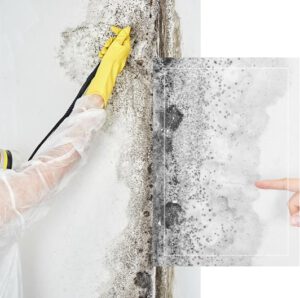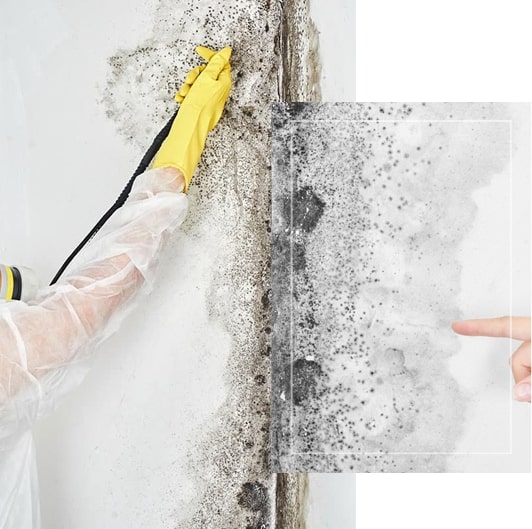While many people attempt to get rid of mold by using bleach, the EPA, the Institute of Inspection Cleaning and Restoration Certification, and others advise against it. Not only does bleach produce harmful fumes, but it is also ineffective. In addition, bleach only works on nonporous surfaces. Vinegar and other natural cleaning products may be better suited to the purpose.
Mold remediation can be an expensive process. The cost of remediation depends on the extent of the damage and the size of the affected area. Small areas can cost $500 to $1,000, while larger areas can cost $5,000 or more. The mold remediation process may require replacing insulation, carpets, and HVAC systems. It may also require dismantling ducts.
The extent of the damage and the type of materials infected also play a large part in the cost. While mold that is easily removed from glass and tile surfaces will cost less, mold that has gotten into more expensive materials like drywall, insulation and wood will cost more to clean. Moreover, removing mold from heavily infected areas will require the use of heavy-duty equipment.
Depending on the type of mold that has affected your property, you should seek help from a professional. Hiring a professional will help prevent health risks and ensure that the mold is completely removed. The EPA recommends hiring a professional for any mold problem larger than 10 square feet. Depending on the size of the area affected, labor costs may range from $25 per square foot. Typically, the labor cost makes up approximately 60% of the total cost of mold remediation.
You should get at least five price estimates before making a decision. The average cost of mold removal is between $500 and $6000. It can also vary by location, toxicity, and type of mold involved. Moreover, toxic molds are typically more expensive to remove because of the increased safety equipment needed.
The cost of mold remediation may vary from state to state and from company to company. The best way to compare costs is to call a professional as soon as you notice a mold problem. Delaying the process can cause the problem to get worse and cost you more. When comparing costs, look for company ratings and customer reviews.
The EPA recommends that you hire a professional for mold remediation unless the area is small and you can tackle the work yourself. It is always recommended that you wear protective clothing and equipment when working around mold. You can also use household cleaning products such as chlorine bleach or undiluted white vinegar to remove mold.
Mold remediation is a multi-step process, beginning with a mold inspection. After finding mold, a mold remediation team will test for contaminants and remediate the affected area. This may involve the removal of carpet, sheetrock, wood floors, ceiling tiles, and other items. You may also need to repair your roof or foundation to make it able to withstand the remediation process.
The cost of mold remediation varies by location and type of mold. For example, mold remediation in your attic can cost anywhere from $1,000 to $4,000, depending on the extent of damage and the size of the affected area. It’s also important to consider how accessible the attic is. If you can avoid a leak or fix the damaged insulation, the cost will be lower.
In mold removal, it’s important to identify the different types of mold. Some types of mold are harmless, while others can cause serious health problems. For instance, black mold can cause respiratory issues and even cause asthma. It can be found on a variety of surfaces, including walls, ceilings, and showers. This type of mold can also cause infections to the skin, eyes, and nails.
Mold is a microscopic fungus that grows on damp surfaces. In the home, it’s commonly found in kitchens, bathrooms, and basements. Some kinds are harmless and don’t affect the structure of a building. Others can damage the appearance of a room, and some can cause health problems.
When dealing with mold, it’s important to determine which materials are porous or nonporous. Nonporous materials can be cleaned and reused, while porous materials should be removed and replaced. Porous materials are more difficult to remove completely. Fortunately, there are a number of methods to help you identify which type of mold is present.
If you’re not sure about what type of mold you have, you can use a combination of vinegar and water to remove it. This mixture is effective at killing mold roots, but it’s not a good solution for every mold type. If you want a more effective solution, try mixing a special mold-removal solution with the bleach solution.

